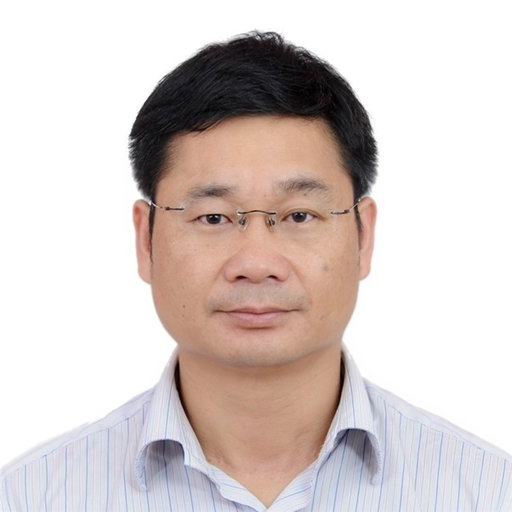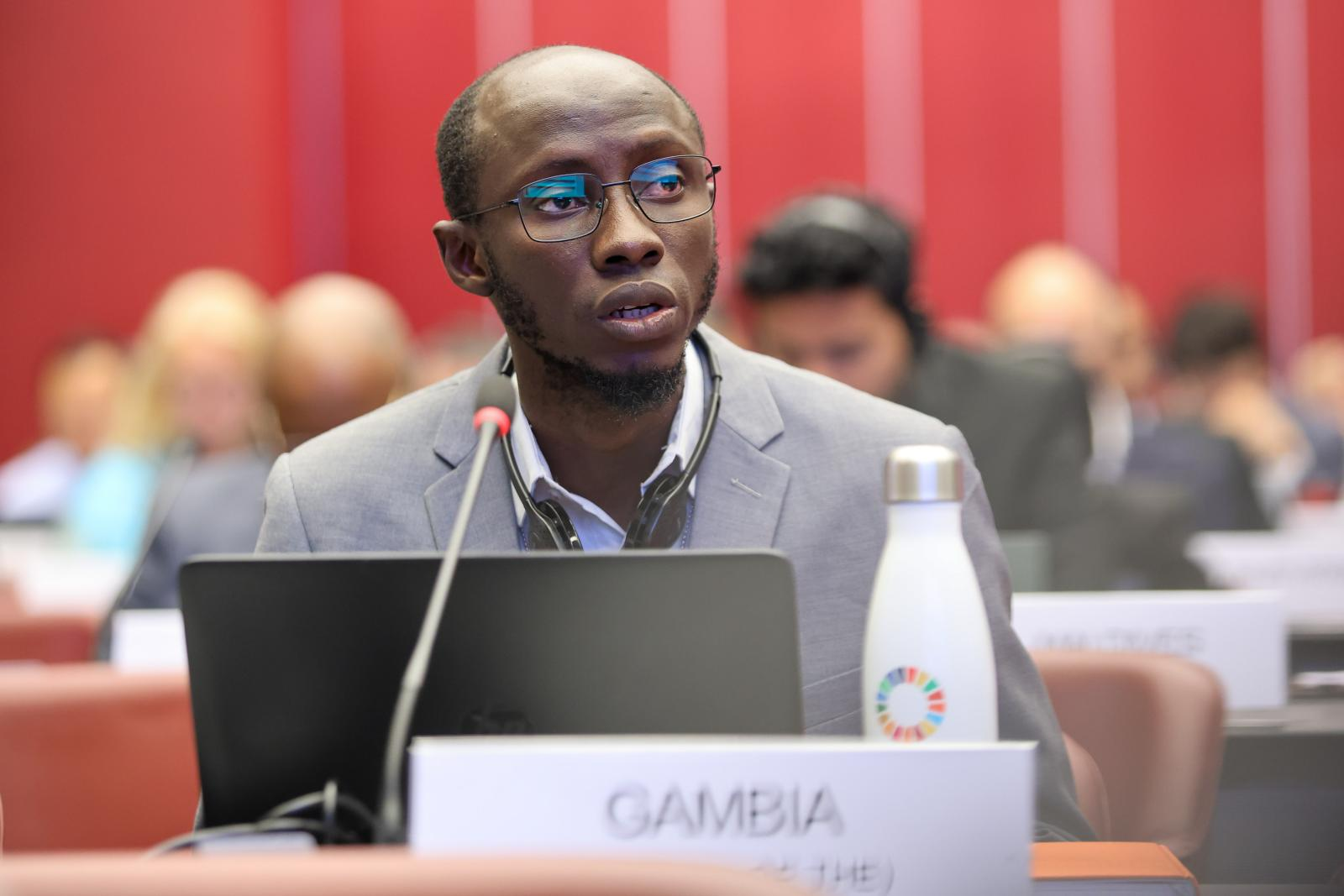Persistent organic pollutants (POPs) present a complex global challenge due to their ability to travel across vast distances, accumulate in ecosystems, and threaten both environmental and human health. Among various media, air has proven to be especially effective for monitoring POPs. As a well-mixed medium, it enables the rapid detection of emissions and supports time-resolved data collection. Air monitoring networks are increasingly expanding the capacity for harmonized, long-term POPs surveillance across Africa and Asia, serving both scientific inquiry and regulatory action.
“I really like the air because it's a well-mixed media, the sampling is quite easier, it can be normalised everywhere in the world, and it's quite sensitive to fresh POPs usage,” Professor Zhang noted during the roundtable.
The inherent characteristics of air make it particularly responsive to POPs emissions. Even small-scale releases in urban areas can be detected at trace levels within hours, offering immediate, actionable insights. This kind of monitoring not only enhances understanding of sources, transport mechanisms, and seasonal variations, but also supports the assessment of exposure risks and the effectiveness of control measures.
Early research in East Asia highlighted the practical value of POPs air monitoring. Collaborative studies in southeastern China identified high concentrations of dichloro-diphenyl-trichloroethane (DDT) in coastal regions. These concentrations were traced to the illegal use of DDT in antifouling paints for fishing vessels. This finding spurred policy action, and by 2009, China had formally banned such use. This case served as an early demonstration of how air monitoring can generate early warnings and directly inform regulatory decisions.
Understanding the broader dynamics behind POPs dispersion is key to designing effective monitoring systems. Globally, POPs are transmitted through the atmosphere, water systems, and migratory species, driven in part by the global distillation effect. Yet in the Global South, additional anthropogenic factors intensify this process. These include the relocation of industrial production—particularly per- and polyfluoroalkyl substances (PFAS) manufacturing—from Europe and North America to parts of Asia. The international flow of solid waste, such as e-waste and plastics, often follows coastal shipping routes, impacting hotspots such as Accra in Ghana and Guiyu in China. The global fish trade also facilitates POPs movement. While environmental PCB concentrations in Africa are relatively low, elevated levels in human breast milk have been linked to seafood consumption from Western Europe. In China, approximately 61% of PCB burden originates from domestic fish, 39% from imported fish, and 20% from Western Europe. Meanwhile, exemptions for the use of POPs in public health interventions, such as DDT for malaria control, also contribute to their redistribution.
In response to these challenges, international efforts have advanced the development of coordinated air monitoring networks. The Southern Contaminants Programme, launched in 2018, established a passive air sampling network spanning 19 countries and 45 cities. Utilizing polyurethane foam-based samplers, the initiative collected nearly 400 passive air samples, offering a global snapshot of airborne POPs. Building on this foundation, the Monitoring and Risk Assessment of Toxic Chemicals in the Air (MORATOXA) programme was developed under the Alliance of International Science Organizations (ANSO). Focused on air toxics, MORATOXA supports the concept of a non-toxic environment, promotes clean air initiatives, and encourages collaborative research, knowledge transfer, and the training of young professionals in alignment with the Green Belt and Road Initiative.
The MORATOXA programme works closely with institutions such as COMSATS University Islamabad in Pakistan, Peradeniya University in Sri Lanka, Dhaka University in Bangladesh, University of Malaya in Malaysia, CSIR in Ghana, and University of Nairobi in Kenya. The initiative deploys custom-built, portable active air samplers and cartridges shipped directly to participating institutions. These tools enable the collection of both particulate and gas-phase POPs in six cities across six countries, providing consistent and comparable data across sites.
This coordinated network has yielded the first comprehensive snapshot of POPs in air across both Africa and Asia. Notably, the highest concentrations of polychlorinated biphenyls (PCBs), spanning all 209 congeners, were observed in Ghana—particularly in Accra and Kumasi—where the electronic waste sector is prominent, as well as in India, where ship-breaking activities are likely contributors. Polybrominated diphenyl ethers (PBDEs) and novel brominated flame retardants (NBFRs) also showed pronounced hotspots in Ghana, India, and Myanmar. In India and Nigeria, elevated levels of short- and medium-chain chlorinated paraffins (SCCPs/MCCPs) were detected. In Bangladesh’s Chittagong region, DDT levels were as high as 1 ng/m³, likely due to the leakage of the legacy stockpiles or continued usage in malaria control. Guangzhou, China registered the highest levels of hexachlorobutadiene (HCBD), obviously linked to its petrochemical industry. The same city also exhibited elevated concentrations of volatile methylated siloxanes (VMSs), reflecting its status as a major hub for cosmetics manufacturing. In 2022, Guangzhou produced over six million metric tonnes of siloxanes, the largest volume in the world, with more than 1,800 cosmetic product manufacturers operating in the area.
Supporting these monitoring initiatives is a strong focus on capacity development. ANSO has been organizing intensive training courses on the monitoring and risk assessment of persistent toxic substances in the environment. The next 3-week training session, scheduled for November-December 2025, will offer participants two weeks of seminars, laboratory exercises, and hands-on instruction in POPs sampling and analytical techniques. These courses aim to empower a new generation of researchers and policymakers with the knowledge and tools needed to strengthen environmental governance and scientific collaboration in the years ahead.
This blog post was developed drawing on insights from the GGKP roundtable “National Implementation Plans: Research needs and opportunities in Africa” held on 10 June 2025 and “National Implementation Plans: Research needs and opportunities in Asia” held on 17 June 2025. As part of the Global NIP Update project (GEF ID 10785), funded by GEF and led by UNEP, this roundtable brought together researchers and experts engaged in reviewing and updating NIPs under the Stockholm Convention to foster peer learning on the development of POPs inventories.
To learn more about the Global NIP Update project, visit Global NIP Update | Green Policy Platform
For a deeper dive into the GGKP regional roundtable focused on Africa, you can access the full recordings and materials here: https://www.greenpolicyplatform.org/webinar/national-implementation-plans-research-needs-and-opportunities-africa
For a deeper dive into the GGKP regional roundtable focused on Asia, you can access the full recordings and materials here: https://www.greenpolicyplatform.org/webinar/national-implementation-plans-research-needs-and-opportunities-asia
Authors:
 |
Professor Gan Zhang, Guangzhou Institute of Geochemistry, Chinese Academy of Sciences, China |
 |
Soomin Bae, Knowledge Management Support Consultant, GGKP/GGGI
|



